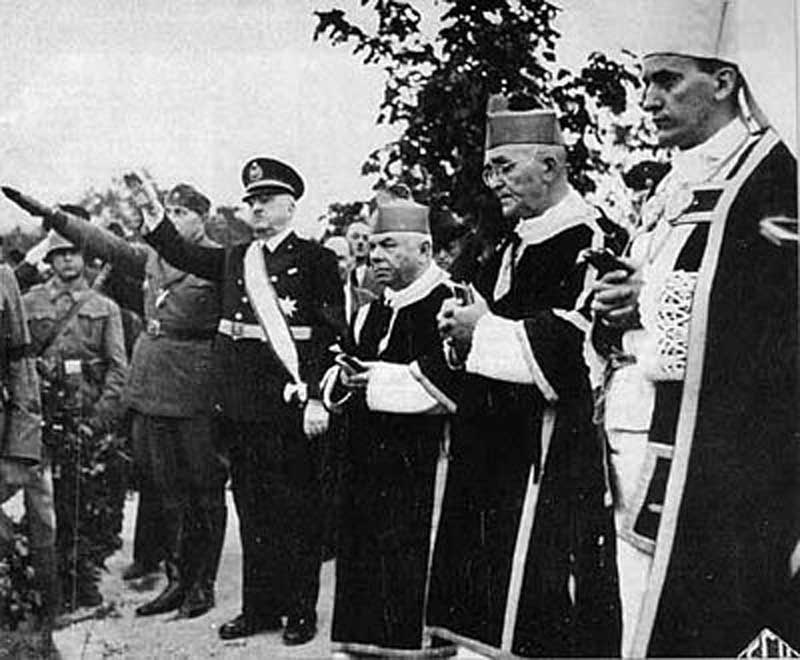
Prijedor – The Kozara Museum Prijedor will request the Republika Srpska Archives to provide it with the school registry books of the Prijedor Gymnasium for the period before and after the formation of the Independent State of Croatia /NDH/, which contain the evidence of mass conversion of the Orthodox population from the town on the Sana River to Catholicism.Director of the Kozara Museum, Zoran Radonjic, has told SRNA that the initiative was taken by a retired professor of the Prijedor Gymnasium, Lazar Gvozdenovic, who himself had sent the same request to both the Museum and the Republika Srpska Archives.
“We believe it is useful for our historical collection and the need for a copy of these documents,” said Radonjic.
The school registry books witness the students who attended the Prijedor Gymnasium and declared Orthodox and were registered as such in 1940/41 school year, while in the following 1941/42 school year they declared themselves Catholics.
Professor Gvozdenovic has also addressed the Serbian Orthodox Church – the Diocese of Banjaluka, aiming at this church governorship to contribute to making such documents available to schools, museums, public and the media because this archive is not enough available, especially among the young people.
“They even do not know where to find evidence of massive and violent conversion of our people to Catholicism during the Second World War. There are those who do not even know it happened. There are also those who maliciously speak of exaggeration,” Gvozdenovic noted in a letter addressed to the Diocese of Banjaluka.
He recalls that the former students and teachers witness the conversion of the Serbs to Catholicism after the establishment of NDH, on this day 75 years ago, in the monograph “The Prijedor Gymnasium 1921 -1981”.
“Summer 1941 elapsed in the dark days of the occupation. We survived the massacres on July 31 and August 1 and 2, and then followed the conversion to Catholicism. The gymnasium started working in autumn”, is the testimony of a student, Drasko Popovic, noted in this monograph.
“After the gathering, my grandmother told me how Ustashas forced them out of the house during the massacre of Serbs in Prijedor, and how their neighbor Muntijanka rescued them by presenting them as Catholics and Croats. I stopped by my aunt Draginja Ostojic. She and her three daughters a few years younger than me, Mirjana, Branka and Drinka, like grandparents, had to convert into Catholicism”, a student, Vojin Hadzistevic, testifies in this book.
The monograph keeps the testimony written by Professor Mato Bace under the heading “My Days in Prijedor”, who says he mostly feared the encounters with the children in the classroom.
“How will these children look at me? How will they accept me? I imagined that, perhaps, the Serb children could not see a good person in me. Finally, I am a Croat. And what `Croats` did to their parents, older brothers and sisters? How the conversion of religion influenced them?” writes professor Bace.
In addition to the evidence of the Orthodox students being converted to Catholicism, the monograph “The Prijedor Gymnasium 1921 – 1981” contains evidence that the Islamic and Catholic religious education was a part of the school curriculum but not the Orthodox one, since the names of the professors who taught Catholic and Islamic religions are only listed, but no professors who taught Orthodox religion.
“This situation was not peculiar to Prijedor only, but for every town of the former NDH. Such overall religious conversion of the Serbs across NDH could only be made after well thought-out plan and programme of the Catholic Church headed by Alojzije Stepinac,” concludes Professor Gvozdenovic.
